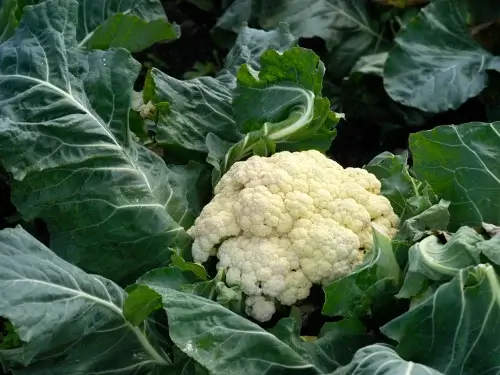Gardening for Food
Gardening for food allows you to get your own trusted and all-natural source of ingredients or herbs, whether you'll be brewing tea, making your favorite salad, or simply just adding spices to your dish.

Welcome to Seedling Squad where your gardening journey begins.
All gardeners start somewhere, and this is where you'll be able to learn the basics, allowing you to solidify a good foundation for your gardening projects.
Did you know...?
Visit our knowledge base if you want to learn the basics down to the most unconventional questions.
Q1: What are sunflower companion plants?
A: Sunflower companion plants are crops or flowers that grow well alongside sunflowers. They either benefit from the sunflower’s height, attract pollinators, or help repel pests. Examples include cucumbers, beans, marigolds, garlic, and squash. These best companion plants for sunflowers help create a healthier, more balanced vegetable garden.
Q2: Why should I plant sunflowers with companion plants?
A: Companion planting helps sunflowers grow stronger while improving your garden’s ecosystem. Some plants, like beans, fix nitrogen into the soil. Others, like onions and garlic, naturally repel harmful insects. Together, these sunflower companion plants enhance soil health, attract bees, and keep your garden pest-free — without chemicals!
Q3: What plants should I avoid planting with sunflowers?
A: Some plants don’t mix well with sunflowers. Avoid:
- Potatoes – attract the same pests as sunflowers.
- Pole Beans – compete for sunlight and space.
- Fennel and other allelopathic plants – release chemicals that inhibit growth.
- Basil and parsley – struggle with too much heat and shade.
These are plants to avoid because they can harm your sunflower plant’s growth or attract unwanted pests.
Q4: What does “allelopathic” mean in gardening?
A: The term allelopathic refers to plants that release natural chemicals (called allelochemicals) into the soil or air that affect nearby plant growth. For example, fennel and black walnut trees are allelopathic plants — they can stunt the growth of sensitive neighbors like sunflowers or beans. Always research before planting them together.
Q5: Can I plant sunflowers in a vegetable garden?
A: Yes! Sunflowers in vegetable gardens are fantastic companions. They attract pollinators that improve fruit yields for vegetables like tomatoes, cucumbers, squash, and beans. Their tall stalks also act as windbreaks, protecting smaller crops from damage. Just remember to plant sunflowers on the north side so they don’t block sunlight from shorter plants.
Q6: How close should I plant companion plants to sunflowers?
A: It depends on the type of companion plant:
- Small herbs or root crops (carrots, onions, garlic): 6–8 inches away.
- Medium crops (beans, cucumbers): 12–18 inches away.
- Large crops (tomatoes, squash, corn): 2–3 feet away.
This spacing ensures good airflow and prevents allelopathic effects between plants.
Q: What are the most common pests that affect dieffenbachia?
A: Like many tropical houseplants, dumb cane can attract common pests such as spider mites, mealybugs, and scale insects. Regularly inspect leaves and treat infestations with neem oil or insecticidal soap.
Q: How do I fix common problems like yellowing leaves?
A: Yellow leaves usually mean overwatering, while drooping may indicate underwatering. Adjust your watering schedule and check soil moisture to resolve these common problems.
Q: Can I propagate dumb cane easily?
A: Yes! You can propagate dieffenbachia from stem cuttings placed in water or soil. Within weeks, new roots will form, giving you new plants to enjoy.
Q: How often should I repot my dieffenbachia?
A: Most dieffenbachias benefit from a fresh pot every 2–3 years, or sooner if roots start circling. Repotting not only gives them more space but also refreshes soil nutrients.
Q: Why is the Dieffenbachia plant also known as dumb cane?
A: Dieffenbachia is also known as dumb cane because its sap contains calcium oxalate crystals, which can cause temporary swelling and numbness in the mouth if ingested, making it difficult to speak.
Q: Why do the large leaves droop?
A: Drooping leaves may mean your plant is thirsty, overwatered, or suffering from cold drafts. Always check soil moisture first. If the soil is soggy, repot into fresh soil with better drainage.
Q: Can I remove older leaves from my dumb cane?
A: Yes, removing older leaves that are yellow or damaged helps redirect the plant’s energy to new leaves. Always prune with clean scissors and avoid cutting too close to the main stem.
Q: Can dieffenbachia plants grow quite large?
A: Yes, given the right conditions, a dieffenbachia plant may grow quite large—up to 6 feet indoors and even taller in tropical climates. Regular pruning helps control its size and shape.
Q: What are the ideal growing conditions for cauliflower?
A: Cauliflower grows best in cool weather with temperatures between 60–70°F. It prefers a garden bed with fertile, well-drained soil, a pH of 6.0–7.0, and consistent moisture. Because cauliflower is more sensitive than other vegetable plants, it struggles in the heat of summer and thrives in spring and fall.
Q: Is cauliflower difficult to grow compared to other vegetables?
A: Yes, cauliflower is considered one of the more difficult to grow garden vegetables. Unlike broccoli and cauliflower’s other Brassica relatives, cauliflower is more sensitive to temperature swings, soil fertility, and watering. With careful timing and steady care, though, you can get excellent results.
Q: When should I start cauliflower seeds?
A: For a spring harvest, start cauliflower seeds indoors 4–6 weeks before the last expected frost. For a fall harvest, start cauliflower 6–8 weeks before the first fall frost date. Cauliflower is best started indoors as seedlings rather than direct sowing, since it needs steady growth without setbacks.
Q: How big should heads of cauliflower be before harvest?
A: Heads of cauliflower, also called cauliflower curds, are ready to harvest when they grow to 6 to 8 inches in diameter. Some cultivars may reach 8 inches in diameter or more, but it’s best not to wait too long or the curds will loosen and lose flavor.
Q: How many days does it take cauliflower to grow?
A: Depending on the cauliflower cultivars you choose, the time to grow from seed to harvest is usually 55–100 days. Spring-planted cauliflower matures faster, while fall crops may take longer but often produce tighter, better-quality heads.
1. What makes a plant a “good luck” plant?
A good luck plant is any house plant believed to bring good fortune, prosperity, or protection. In many traditions, plants are known to bring balance and positive energy into spaces, with certain species like the Money Tree plant, Chinese Money Plant, or Lucky Bamboo plant considered symbols of good luck. Feng Shui practitioners often recommend these plants to attract money, love, and good fortune, especially when they are placed in the home or office in specific directions.
2. Which plants are best to attract money and prosperity?
Popular plants to attract money include the Money Tree plant, Chinese Money Plant, Jade Plant, and Pothos plants. These are often referred to as Feng Shui plants to attract wealth and good luck. Among the best Feng Shui plants, Lucky Bamboo (especially lucky bamboo 6 stalks), Jade, and Money Trees are known to bring prosperity and good luck.
3. Can Feng Shui really help plants bring good energy?
Yes, Feng Shui can be translated as the “way of wind and water,” and Feng Shui lucky plants are believed to bring balance and energy flow indoors. Chinese Feng Shui emphasizes placing plants in your home in areas that welcome good chi (energy). Popular plants like Lucky Bamboo, Money Tree, and Pothos plants are best used as Feng Shui indoor plants to attract wealth and good luck to your home.
4. Which good luck plant is best for home décor?
Peace Lilies, Orchids, and Bamboo Palms are excellent for home décor because they combine beauty with symbolic meaning. These plants are associated with luck and believed to bring peace, harmony, and prosperity. For a plant that symbolizes good fortune and enhances home décor, Money Trees and Chinese Money Plants are also excellent choices.
5. What’s a good plant for housewarming gifts?
Plants like Lucky Bamboo, the Money Tree plant, and Orchids are traditional housewarming gift options because they are believed to bring good luck to your home and symbolize wealth, love, and good fortune. They’re also easy-to-grow plants that add good luck and positive energy when placed in the home.























































